

In this exploration, we will first be looking at how to find a circle tangent to two given circles. Consider the picture:
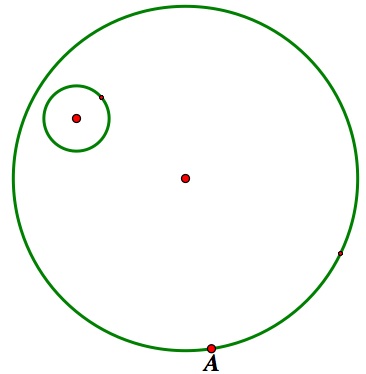
The goal is to find a circle tangent to both circles at point A. It is fairly intuitive that two such circles will exist, and they will look like this:
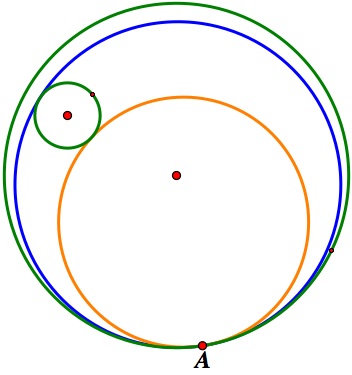
Provided that we can find the center of such circles, their construction is easy. We only need to draw a radius through point A from their centers. That makes the goal of our first exploration how to find these centers. In order to do so, we will need to label some more points:
A is the point of tangency on one of the circles.
B is that circle's center.
C is a point on the radius of the other circle.
D is that circle's center, as such:
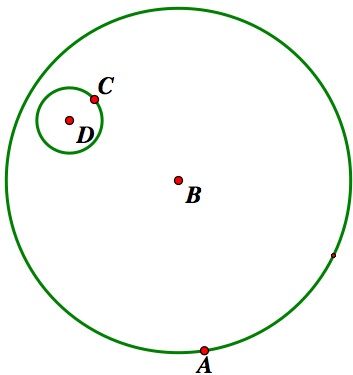
Since the point of tangency on one of the circles is always A, we will start by constructing a line between A and B. The center of the tangent circle we're looking for must be on this line. This is because this center is equidistant from A and the smaller circle, and A is on the tangent circle itself, so its radius will be on the line perpendicular to the tangent line at A. We will go ahead and call the center of this tangent circle J. We know that |JD| = the radius of the smaller circle (|CD|) + |AB|, so we can construct point E that is |CD| away from A as such:
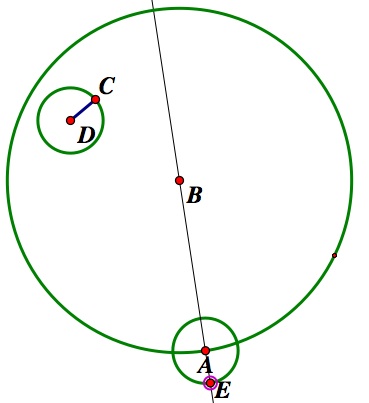
Now, we need to use this to find J. We know E and D are both equidistant from J. Therefore, we can construct the set of all points equidistant from E and D, which is the perpendicular bisector of the segment between them. Since J is also on the line that goes through A and B, the intersection of these two lines is J. We then use J as the center and A as a radius to construct our circle, as such:
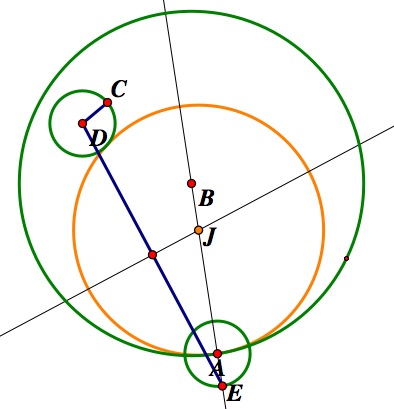
We can find the other tangent circle in the same way. We will call its center K. The difference is that K will be equidistant from A and the small circle on the far side. For this reason, |KD| = |KA| - the radius of the smaller circle (|CD|). So we need to construct F that is closer to K by distance |CD|, which gives us point F here:
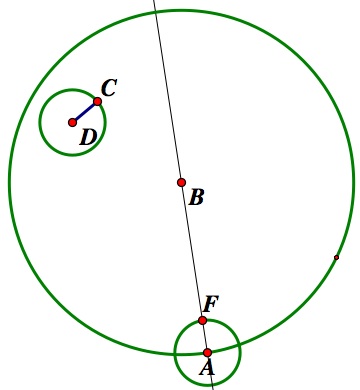
We know F and D are both equidistant from K. Therefore, we can construct the set of all points equidistant from F and D by taking the perpendicular bisector, as we did before. The intersection of this line and the line containing A and B give us K. We now just construct our circle with center J and radius |KA|:
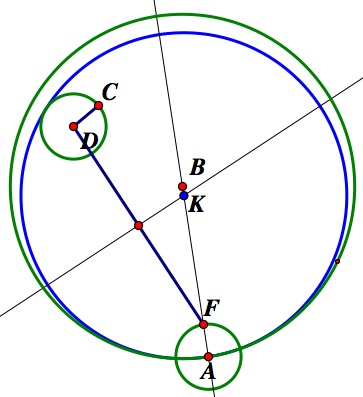
We now have the two tangent circles we desire. This construction allows the user to move A as well as move the circles so that they intersect or are completely disjoint as well. The end result looks something like this when the extraneous lines and points are hidden:
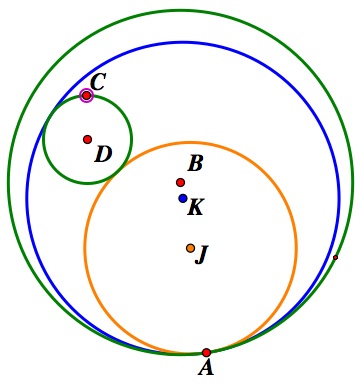
For our next exploration, we will look at the loci of these centers as we move A. First, we will continue with the example of the smaller circle inside the larger circle. Here is a trace of the loci as A moves around the circle:
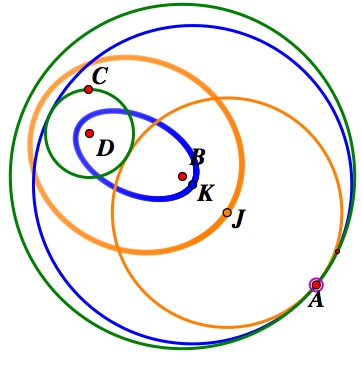
These loci appear to be ellipses. We will look at a proof that they in fact are. One way to define an ellipse is that the sum of the distances between the focal points and any point on the ellipse is equal to a constant. We will show that this is true for focal points B and D for both ellipses. We will first look at |BJ| + |DJ|. Consider this graph where G is the point of tangency on the smaller circle:
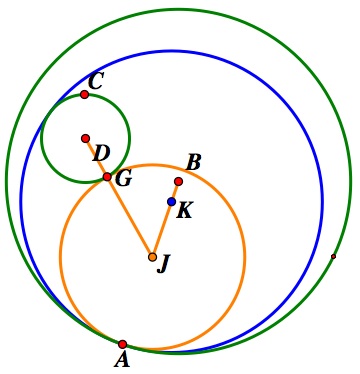
|DG| = |CD| = the radius of the smaller circle.
|GJ| = |AJ|, so |GJ| + |BJ| = |AB| = the radius of the larger circle. Therefore,
|BJ| + |DJ| = the radius of the smaller circle + the radius of the larger circle. Therefore, the locus of J as A moves is an ellipse.
Now we will look at the locus of K. We will first use H as our point of tangency as such:
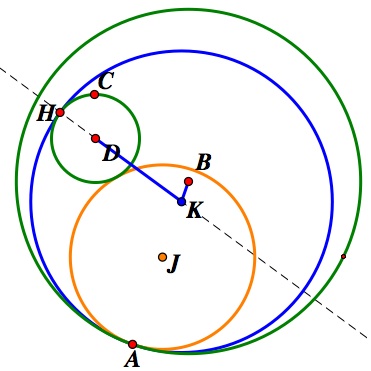
We are interested in |BK| + |DK|
Note |AK| = |HK|, so
|AB| = |BK| + |DK| + |DH|, so
|BK| + |DK| = |AB| - |DH| = the radius of the larger circle - the radius of the smaller circle. Therefore, the locus of K is also an ellipse.
So far, we have only looked at finding the tangent circles of two circles when one of those circles is inside the other. Now we will look at what happens when the circles are intersecting:
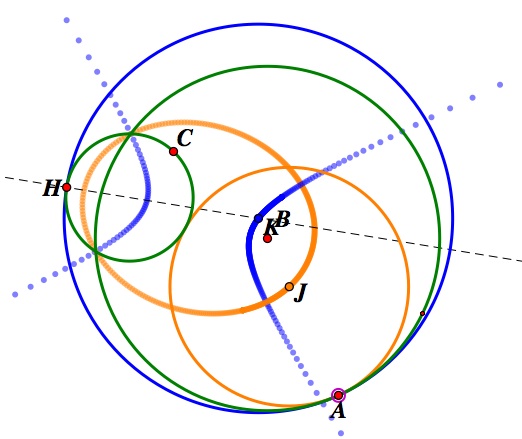
As you can see from the picture, the locus (J) of the center of the smaller of the two tangent circles (in orange) is still an ellipse. The proof that this is an ellipse is the same proof that J is an ellipse in the above case. The Locus of K, on the other hand, appears to be a hyperbola. We see a similar situation in the case of two disjoint circles:
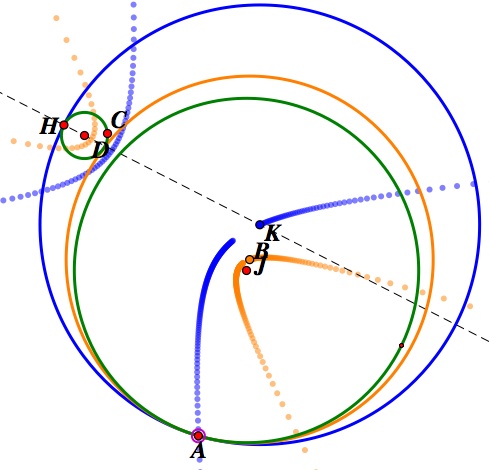
In this case, both the locus of J and the locus of K appear to be hyperbolas. An extension of this exploration would be to prove that this is (or is not) the case; however, I will not be proving this statement in this exploration.